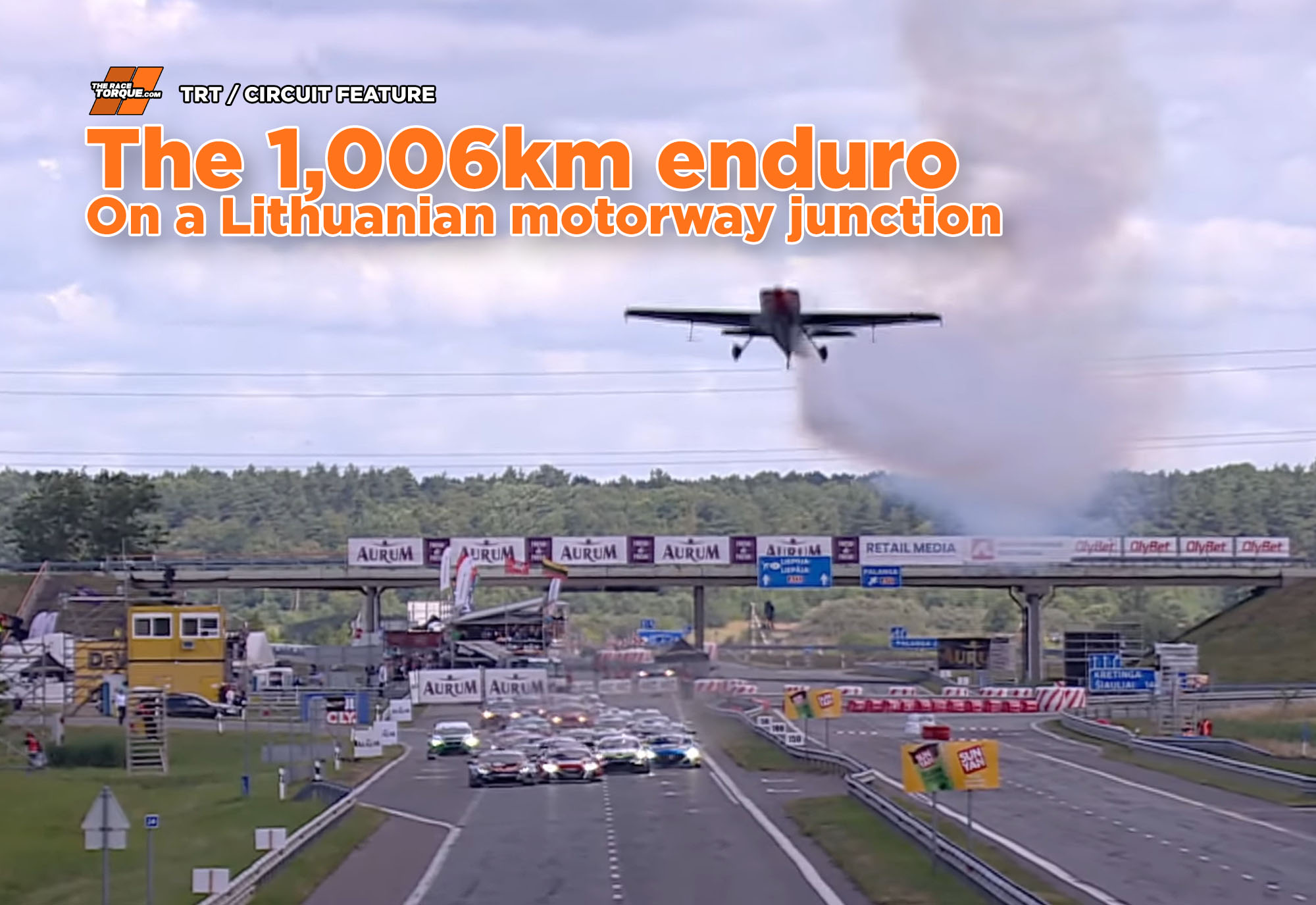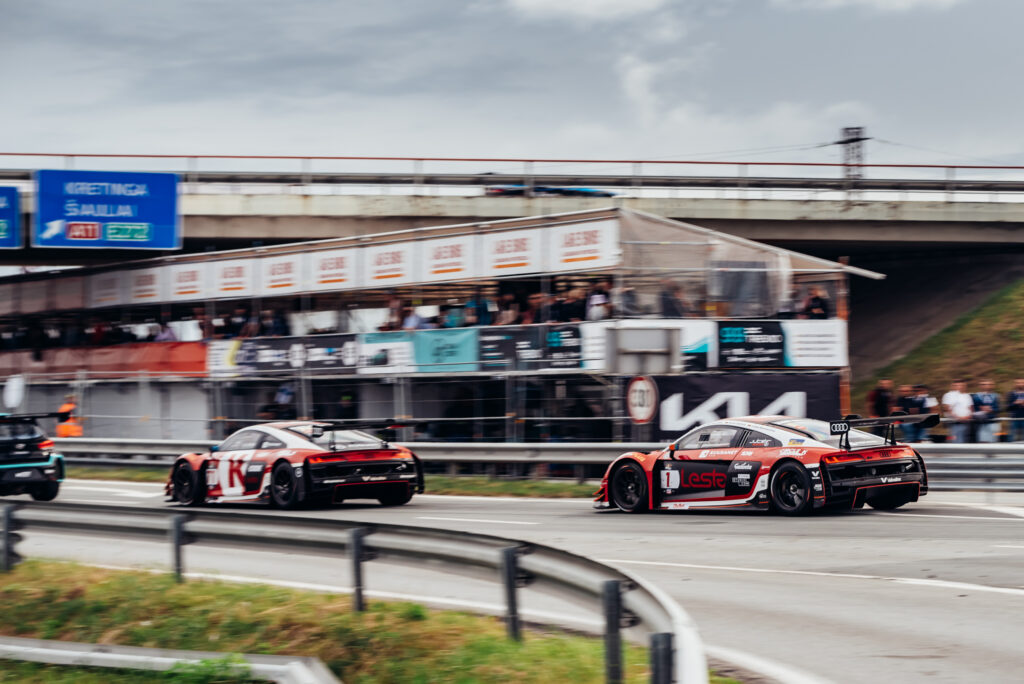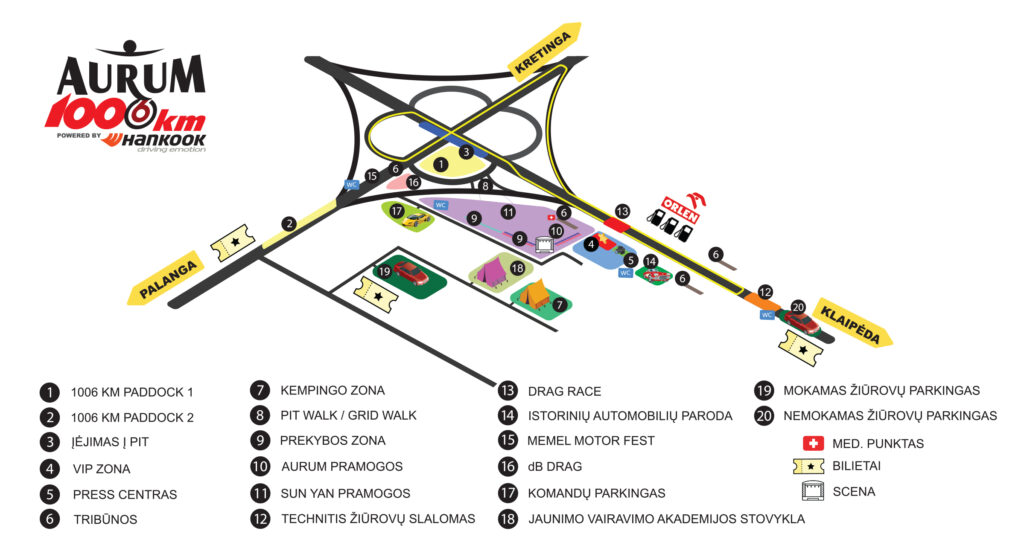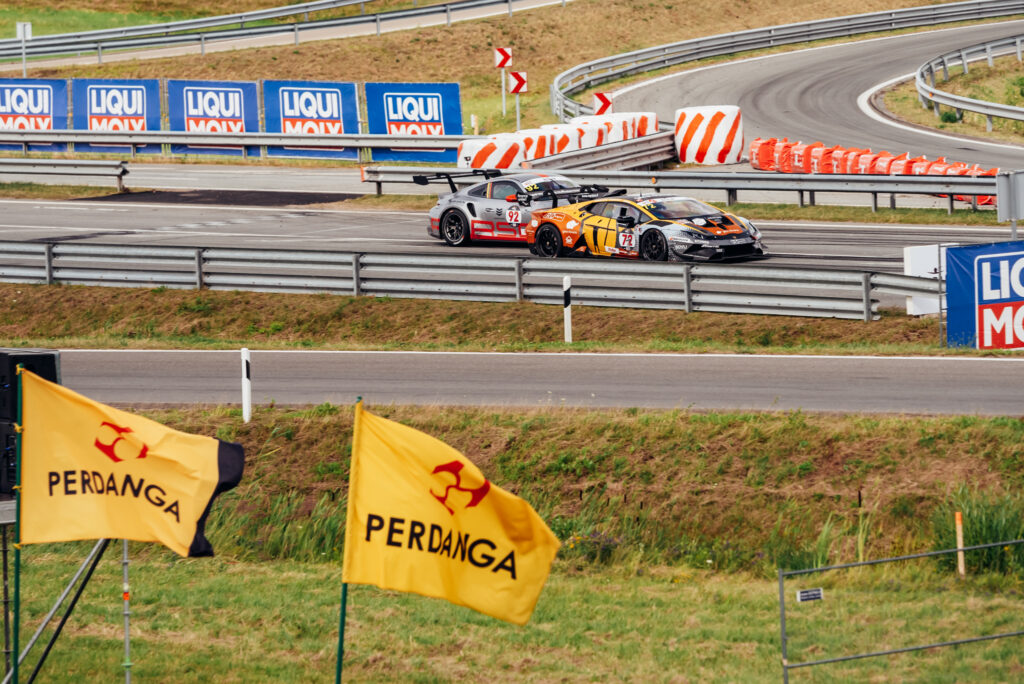The crazy race held on a freeway interchange

THIS weekend sees the 25th anniversary of the best car race we never knew about – the Aurum 1006km Enduro in the middle of absolutely nowhere, Lithuania.
As such, we felt it appropriate to revisit our story, first published on July 20, 2022, that tells the story of how those crazy Eastern Europeans created a street track out of a freeway interchange..
IT’S LATE. You’re on the motorway, coming home from work, the airport, a date, whatever. There’s little traffic and the road around you is clear as you head towards your exit.
Ahh yes – your exit. Not just a standard slip road that terminates in a junction or merges into the B-Road that the freeway crosses. This is a proper exit. A cloverleaf exit, swinging through the full gamut of 360 degree goodness, complete with positive camber and a nice, wide apron on the inside.
You indicate into the slip lane off the motorway but stay as far right in the lane as possible, widening your entry into the long corner as you search the dark verge ahead for the braking point (the first of the repeated ‘arrow’ signs pointing to the left, the direction of travel).
You get to the marker and hit the middle pedal, changing down two gears with a neat heel-toe. The car feels energised as you keep the weight over the front axle and begin to rotate in towards the long, long corner and the ever-beckoning apex.
You have to be patient – the apex is a long, long way around – but gradually you release the brake pressure as you feel the nose commit to the corner, before gradually feeding on the power as the corner opens, pushing you towards the road that crosses at 90-degrees to the motorway you just left.
The rear squats, the car squirming for traction as you open the steering and get into the throttle as you merge into the road below, passing below where you once were following a few minutes of rare driving enjoyment amidst the humdrum of city commuting.
For a brief moment, a seemingly benign freeway interchange has been your private bit of race track.
Imagine if you could do it in real life?
Well, it turns out that if you head to Lithuania, you can.
THE AURUM 1006KM POWERED BY HANKOOK
LITHUANIA: THE FORMER member of the USSR, located on the Baltic Sea and sandwiched between its fellow former Iron curtain brother Latvia and the oddly located Russian province of Kaliningrad, has a population of about 2.8 million people and doesn’t immediately spring to mind as a motor racing powerhouse.
However, it is in such countries as Lithuania where you can still find some of the more weird and wonderful elements of the racing world that have survived unseen from beyond the FIA’s relentless push for miles of concrete runoffs and tekpro barriers.
Which is where we are introduced to the Aurum 1006km, the epic Eastern European endurance classic sponsored by an Ice Cream company that you probably had no idea existed.
And yes, it’s held entirely within the boundaries of a freeway interchange linking the A11 and A13 Motorways.
A BRIEF HISTORY
REMARKABLY, this completely mad and utterly superb concept of an event was founded in the year 2000 as a mixed-field, 1000km enduro held on a temporary circuit made out of two stretches of freeway and the associated interchange-y bits that link them together.

The first race was won by a Porsche 993, the first of 15 victories for the brand in the race’s now 22-year history.
While the race may be relatively unknown, it’s comforting to learn that even unknown endurance classics are dominated by the most successful brand in the history of long-distance racing.
Initially open to a broad church of Sports Racing, GT and Touring Cars, open-topped cars like Radicals were banned for safety reasons (we’ll come to that) following the 2014 event.
The first Porsche victory came in 2004 via an Audi RS4, while the first non-Lithuanian drivers to succeed lifted the big trophy in 2008 and yes, they are names you will recognise: German Sports Car guru Ralf Kelleners and UK ace Peter Dumbreck joining Russian Aleksey Vasilyev and local driver Jonas Gelzinis to win aboard a Spyker C8 Spyder.
Since then the race has evolved to become broadly similar to many of the multi-class GT-based endurance races around the world – think Dubai 24 Hour, for example – with the field comprised of GT3 and GT4 cars, GT Open cars, TCR cars and a host of local endurance racing specials.
Lithuanian driver Jonas Gelžinis is the most successful driver in race history, having won it a record 10-times. The 34-year old was a junior prodigy, was runner-up in the 2013 Carrera Cup Great Britain and a former Porsche junior Shootout contestant – the same year Kiwi Earl Bamber won it.
The 2022 race was held in mid-July and was won by an Audi R8 GT3 entered by the Circle K – Lesta Racing Team and drivers Marijus Mazuch, Eimantas Navikauskas, Ignas Gelžinis and Julius Adomavičius. The latter set a new lap record en-route to victory at 1m07.126s.
More than 70,000 attend the three-day event, which was broadcast live on national TV.
Starting at midday and finishing at just before 8:30pm, they beat their sister Audi by just under 27 seconds, completing the 373 laps in a little over 8 hours, 20 minutes. 31 cars started the race.
PALANGA CIRCUIT
AT 2.6km, the Palanga Circuit (named after its geographic location) is a 12-turn temporary street circuit comprised of the A11 and A13 highways that intersect in the North West of the country.

The A11 is the main motorway accessing the town of Palanga, a resort city on the Baltic coast, from the East of the country. The A13 runs North-South, linking the more major costal cities of Liepaja in the North and Klaipeda in the South.
Interestingly, you end up heading North on the A13 if accessing the event from Lithuania’s capital, Vilnius – a 330km drive to the Southeast. Also somewhat less interestingly, before today Vilnius was the only city I knew existed in the country thanks mainly to Tom Clancy and his book, The Hunt for Red October, and the cities location as the home of the fictional Soviet submarine commander, Marko Ramius.
It seems remarkable that a major cloverleaf interchange between two seemingly significant junctions could be closed for three days a year to accommodate a car race and yet that is exactly what they do.
The circuit starts by heading south on the A13 – the pit lane is on one side of the four-lane motorway, the circuit on the other as the road crosses below the East-West A11.
A quick chicane then shifts cars back to the other side of the road, heading South, where they negotiate a longish straight – broken up by a temporary chicane – before a tight hairpin spins them around 180-degrees heading in the opposite direction.
(Incidentally, the circuit does abide by the correct direction of travel for Lithuania, driving on the right).
The field blasts back up the A13 towards the interchange, quite literally merging right on the slip road before taking the exit towards the A11 towards Kretinga (Distance: 8km).
Before the slip road deposits the cars Eastbound on the A11, there’s a short access road linking the on-ramp and the motorway itself; a left hand-hairpin that puts the cars up on the A11 overpass, facing West.
They then fly over the overpass (pit lane beneath them – that has to be a world-first in motorsport) before taking another exit (Klaipeda, 25km away) to the right.
This one is a beauty, a full loop around on itself before it deposits cars back onto the A13, facing South, and at the pit lane entry beneath the underpass.
The start / finish line comes after the quick flick back onto the other side of the motorway, following the pit exit.
It is quite literally the dream that every boy sitting in the back of their parents’ car had when they first saw a freeway on ramp, realised.
Circuit safety seems.. well put it this way, it’s no Abu Dhabi. There’s single or double-row Armco on a lot of the corners – exactly the same stuff you would find on your every day Freeway exit ramp here – which probably explains why open-top cars were banned from the race.
Tractor tyres stop people from having a head-on with the motorway divider between each side of the road. And aside from a few concrete blocks on the exits of some of the quicker on/off ramps and armco lining much of the remainder of the track, that’s about it. There are parts of the main straight with zero protection at all but then again, little to hit either.
Other quirks? Well, the pit lane doesn’t accommodate refuelling so instead an Orlen Petrol Station, conveniently located on the uptrack of the A13, is used for fuel stops throughout the race.
This isn’t actually that far removed from races like the Dubai 24 Hour, where fuel stops are timed and done from a bowser, rather than dry break systems.
Pole position this year was a 1m06.148, set by the Audi R8 LMS that would ultimately finish second in the race.
It might be held in a crazy location, but the event itself is a lot like every other street circuit festival you might come across in Australia, the USA or elsewhere.
There are DJs playing, campgrounds, big screens for the crowds who sit in temporary grandstands or on the grass berms on the side of the motorway, busses bringing spectators in from nearby towns, food and drink, car displays and a support program that includes vintage racers, something called the ‘Sonax Sexy Car Wash’ and a 108km long mini enduro for Women only.
The race has a high quality TV production and seems well attended. It looks proper!
ITS CRAZY, BUT GOOD CRAZY
IT’S NICE to know that races like the Aurum 1006km still exist – slightly off-kilter, madhouse affairs that seem to be slightly out of their time and yet, you wouldn’t want to live in a world where they don’t exist, right?

This seems like a fairly major affair. It appears well run and promoted, with professional social media and website that works in English as well as the local dialect. The field looked great, the racing was clean and hard and the whole thing just ticks a lot of boxes.
It’s a race that we think deserves more international attention than what it currently has.
So, the next time you’re firing off your local motorway and onto that tasty-looking exit ramp, pretending for a brief moment of driving enjoyment that you’re in your own little motor race, remember; if you travel far enough, you could actually do it for real.
You should follow the event on Facebook here.







